A Gourmet Guide to Modena
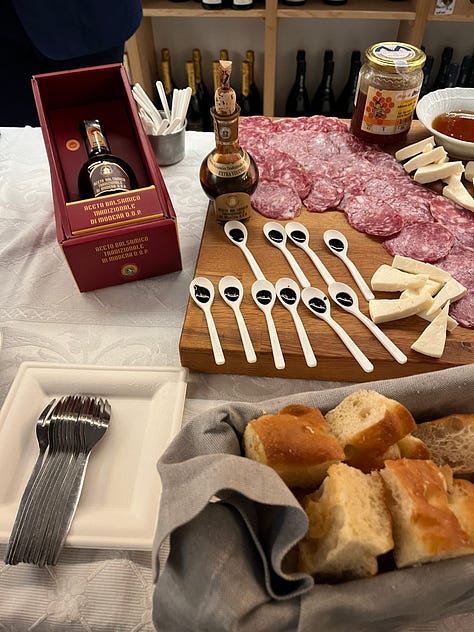
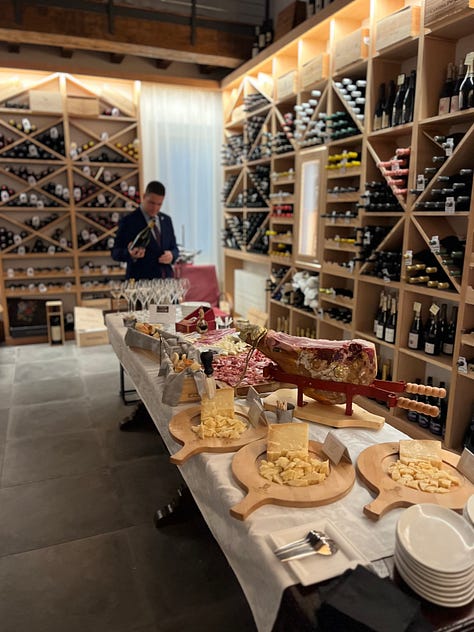
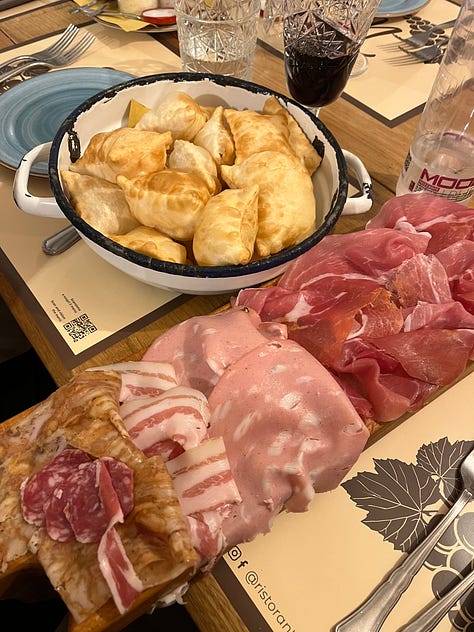
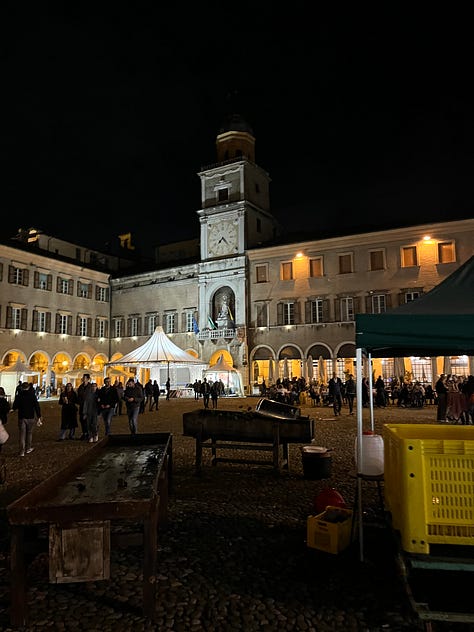
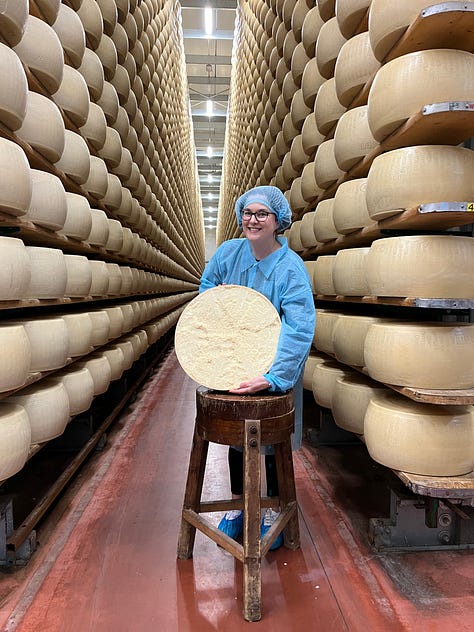
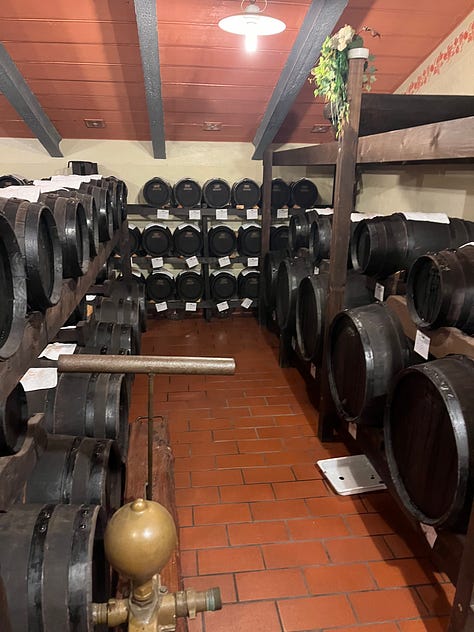
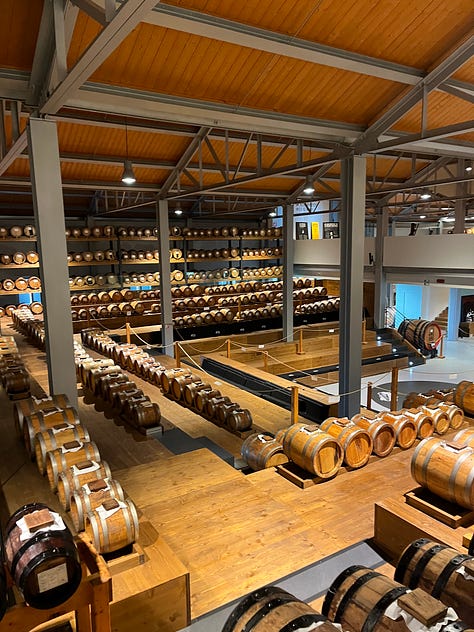

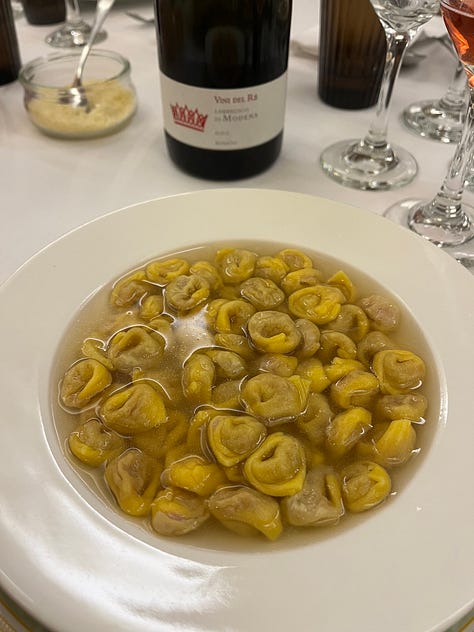
Note: I travelled to Modena as a guest of Piacere Modena. All recommendations are genuine and entirely my own.
I’ve not long returned from a fantastic visit to Modena in Emilia Romagna. I’ve wanted to visit for some time, given its reputation for fine food and drink. In fact, Emilia Romagna as a region has the highest number of IGP producers in the world. Modena has over 20 and Emilia Romagna holds over 44.
Modena is a beautiful, historic city surrounded by lovely countryside, filled with vineyards and cherry orchards. It is a truly lovely destination for a break and would possibly be particularly interesting in May, for the cherry harvest, and October for the grape harvest.
Here are my recommendations for things to do, places to eat and local specialities to try.
Where to eat in Modena
My top picks for places to eat in Modena include Trattoria Pomposa al Re Gras run by Michelin starred chef Luca Marchini. It is an absolutely charming restaurant that serves some really interesting traditional, regional dishes, such as budino di polenta with dried fruit and walnuts, fried polenta with ricotta, cotechino with mashed potato and borlotti beans and pannacotta with crushed amaretti and IGP balsamic vinegar. The wine list is fantastic, and we enjoyed a great Torre Tusini Lambrusco di Sorbara to pair with the food.
Where to eat in the surrounding area
There are some totally fantastic places to eat in the towns and villages that surround Modena, and I really recommend a trip slightly further afield to see more of the area.
Osteria di Rubbiara is a real standout for me. It’s an utterly charming, traditional restaurant, packed with regulars and a no-phone policy with hand-carved wooden boxes into which mobile phones can be stored for the duration of the meal. As an experience, it was one of the best of the trip. Starting with an outstanding gnocchi frito with prosciutto di Modena, a frittata with 24 month aged Parmigiano Reggiano and their own 25 month balsamic vinegar was a treat. Try their tortelloni with mascarpone, ricotta, pear and more house-made balsamic vinegar. Finish with a grape must jelly and shots of liqueur from their extensive collection – nocino was my favourite.
I cannot urge you more strongly to make time for a tour of their Acetaia Pedroni – balsamic vinegar production site. Developed over six generations, you’ll see how they press local Trebbiano grapes and barrel-age this special vinegar. It is absolutely a sight to behold, with the oldest barrels dating back to 1860. Truly an unforgettable experience.
Another highlight was Ristorante Zoello in Castelvetro di Modena was another highlight. This is a really traditional family-focussed Modenese restaurant, that was full of families, old and young, dining together come 8pm. It is a really charming restaurant with lovely service and trollies laden with treats wheeled speedily to tables, which was great for nosy diners like me, who like to see what other dishes on the menu look like.
Starting with the gnocchi frito was fantastic. Look out for the calzagato frito con pancetta, too. The main course, for so many, is the tortellini in brodo, which is a house speciality. It is ladled to diners at the table from a large ceramic tureen. Theirs are small (apparently seven are supposed to fit on a spoonful) and filled with pork, prosciutto and mortadella in a rich, meaty broth. We paired this with the Settecani Graspararosa, which is produced just across the road (more on this excellent producer below).
My final recommendation is the excellent Strada Facendo, just outside of Modena. We enjoyed a tasting menu – every dish was excellent – as was the delightful service at this charming family-owned restaurant. Book ahead for a very special lunch or dinner. It’s only around 5KM from the centre of Modena, so really not too far to travel and very much worth it.
Producers to visit in the area
Given the exceptional quality of food and drink products made in the area, I think it’s very much worth taking the time to visit some of the exceptional producers in the region for a tour, tasting and some shopping.
First on my list is a Lambrusco producer. This is the wine from this region. Forget any preconceptions you may have – it is excellent and pairs superbly, as you might imagine, with the region’s food. I mentioned Settecani in Castelvetro. This is a brilliant DOP Lambrusco producer. They have a fantastic site for a tour, a tasting and a great shop. They’ve been making Lambrusco since 1923, taking grapes from local growers as part of a social cooperative. Grapes are picked by hand and pressed and fermented using the Charmat method. The skin of the grapes is used to produce grappa. Their whole range is excellent, but I really liked the Pignoletto, Settimocielo and Grasparaosa.
Coop Casearia Castelnovese in Castelnuovo Rangone is an excellent Parmigiano Reggiano producer. They have a sizeable production facility where they also make a range of stracchino, ricotta, yoghurt and caciotta as well as the famous Parmigiano Reggiano. It’s a fascinating experience watching the parmesan being made. The curds are heated in copper cauldrons, coagulated and then cut and lifted by hand into muslin cloths. They then drip to remove the whey and are pressed into moulds before being brined and then matured on wooden shelves. If you can, take a look at the thousands of wheels being aged in their temperature and humidity controlled warehouse. The excellent shop sells their wonderful cheeses at varying ages of maturity. I am especially fond of 24 month aged, but you can buy up to 40 month aged to try. I made sure I stocked up – the prices compare very favourably to buying back home.
I mentioned the Acetaia Pedroni, but at the opposite end of the spectrum, you’ll find Mazzetti in Sorbara. This is one of the largest balsamic vinegar producers with 20 million litres of aging capacity. Founded in 1906, it now supplies businesses all over the world with their balsamic vinegar and was recently made a B Corp. A tour of the facility is fascinating, learning about the long history of balsamic vinegar, how it is made from Lambrusco and Trebbiano grape must that is cooked and aged in a sequence of seven wooden barrels to give a complexity of flavour. These include mulberry, chestnut, cherry, juniper, acacia, ash and oak. Used as a medicine, sweetener and seasoning, it is now popular the world over. It received it’s PDO status in 1983 and the special 25 year aged product is sold in a distinctive bottle with a square base and bulbous body, designed by Ferrari designer Giorgetto Giugiaro. Don’t forget to have a look at Hercules, the extraordinary barrel which holds 14 million litres, is 8 metres tall and is made with 100 year old oak. Happily for us, we can find the Mazzetti vinegar in many retailers in the U.K. I like their 5 year aged black label best.
Salumificio Leonardi in Marano sul Panaro is a little way out of Modena, but it’s tour and tasting is really interesting. They are one of the top 5 producers of Prosciutto di Modena DOP, as well as producing a number of other kinds of prosciutti. They take the legs from female pigs, salting them in Sicilian sea salt (also used in Parmigiano Reggiano) and carefully aging them in a series of stages with varying levels of humidity for at least six months. The DOP Prosciutto is made using the Large White breed which are fed on acorns and whey from the Parmigiano Reggiano cheese making. The climate in the local area is ideally suited to aging the pork to produce such exceptional results. Be sure to look for the PDO ‘tattoo’ mark on each ham to ensure you are buying the real deal. Other fantastic products you can try as part of the tasting are their DOP 36 month Prosciutto, Mortadella, Pancetta, Culatta with black truffle capocollo culatta, salami and served with tigella, a local bread and Lambrusco.
What to do in Modena
It is really worth allocating a few hours to spend exploring Modena, which is a fascinating city with lots to see within a relatively compact area.
The cathedral is very much worth your time, dating back to the 12th Century, it’s a great example of the Romanesque style. The Ghirlandina tower is also worth a look and like the cathedral, it’s leaning quite dramatically. They form part of Modena’s UNESCO World Heritage Site. The Piazza Grande and Piazza Communale are both very much worth an explore and we found some very nice cafes to stop and enjoy a drink and watch the world go by.
Food lovers will find the indoor produce market interesting with an interesting range of products on offer.
I also recommend a visit to Giuseppe Giusti balsamic vinegar boutique for a truly special (and delicious) experience.
Where to stay
Modena is a small and historic city, so there are not that many places to stay in the centre.
I stayed at the Hotel Central Park, which was clean, centrally located (certainly very easy to walk from there, around the centre and back). Rooms were large, clean and breakfast was excellent, with a lovely choice of cheese, charcuterie, ripe melon and good coffee, all served with a charming smile.
Getting here
It’s probably easiest to fly to Bologna, which has regular flights from Gatwick and Stanstead. It is around an hour’s drive away from Modena. If you wish to take public transport, you can take the airport shuttle train to Bologna Centrale station and change here for Modena. Trains take around 12 minutes and then 30 minutes respectively, so the journey shouldn’t take too long. Expect to pay around 25 Euros for the journey.



